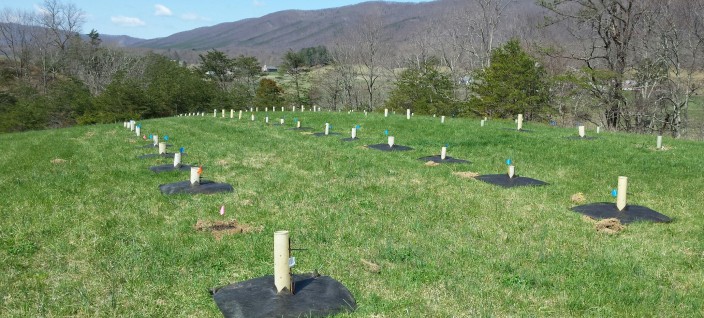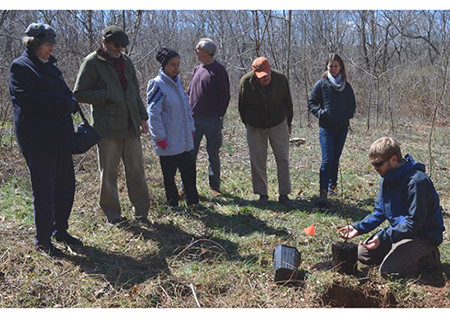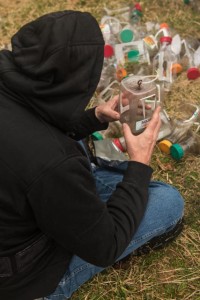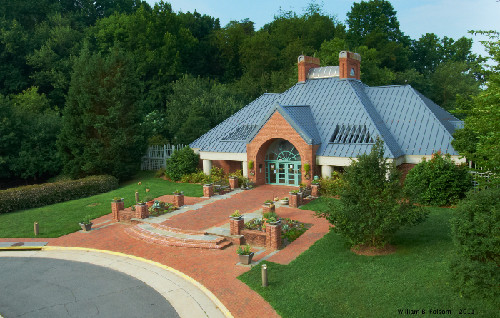Virginia News
Seed Planting at Catawba
On the bright and windy morning of Saturday, April 4, four volunteers planted 88 chestnut nuts at the Catawba Sustainability Center’s breeding orchard. The Catawba Sustainability Center, a property of Virginia Tech, is located in Catawba, Virginia. Catawba is a...
Planting at Ivy Creek
On March 28, five Restoration 1.0 chestnut seedlings were planted at the Ivy Creek Nature Area near Charlottesville. These seedlings are a 15:1 cross between native American chestnuts and Chinese chestnuts and have been bred to incorporate the blight resistant...
Volunteers Work in Roland Orchard
On March 26, six volunteers braved a rainy morning to work in the Roland Orchard in Fauquier County. Eighty-six traps were baited and set for Asian Ambrosia Beetles (AAB), which are a serious threat to the health of chestnut trees. In addition, the volunteers measured...
Planting Time is Coming!
The season for planting chestnut trees—whether from seeds or seedlings—is springtime. If you are planning to plant this spring, it’s time to be thinking about what you need to do to improve your chances of growing healthy American chestnut trees. First, consider your...
Meadowlark Gardens Planting May 3
The Northern Virginia Regional Park Authority and the Virginia Chapter of The American Chestnut Foundation will plant a demonstration orchard of Restoration Chestnuts at Meadowlark Botanical Gardens in Vienna on Sunday, May 3 at 11:00 am. We are looking for a few...
Ceremonial Planting at Montpelier April 24
A ceremony was held on April 24, 2015, for the planting of a Restoration 1.0 American chestnut tree on the grounds of James Madison’s Montpelier near Orange, Virginia. For more information about Montpelier, the home of James and Dolley Madison, visit...







